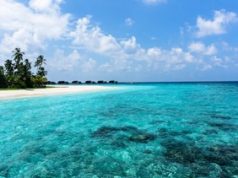
Estuarine habitats, where rivers meet the sea, are among the most productive yet highly threatened ecosystems on the planet. These unique environments provide critical services such as buffering coastal areas against storms, filtering pollutants, and offering vital breeding grounds for fish and other wildlife. However, due to human activity and natural changes, these habitats face significant degradation. Restoration techniques are crucial for their recovery and protection.
John Wnek of New Jersey, an adjunct faculty member at Stockton University and a supervisor of science and research at the Marine Academy of Technology and Environmental Science, brings extensive experience in coastal ecosystem research and education, particularly focusing on the challenges and restoration efforts in Barnegat Bay, NJ. His insights into pathogen studies in Toms River, diamondback terrapin conservation, and removing derelict fishing gear contribute significantly to understanding the practical applications of these restoration methods. This article from John Wnek explores various methods used to restore estuarine habitats, such as oyster reef restoration and salt marsh planting, examining their effectiveness across different regions.
Oyster Reef Restoration
Oyster reefs are vital to estuarine environments. They act as natural water filters, removing pollutants and sediment, and provide habitat and protection for various marine species. Overfishing, disease, and pollution have drastically reduced oyster populations. John Wnek explains that restoration efforts aim to rebuild these reefs to their former ecological status. One effective technique involves placing layers of oyster shells, limestone, or other suitable materials on the estuary floor to provide a substrate for oyster larvae to attach and grow. John Wnek explains that this method has been employed with notable success in places like the Chesapeake Bay in the USA, where it has not only increased oyster populations but also boosted fish numbers and improved water quality. Researchers have documented a significant reduction in nitrogen levels and an increase in water clarity in areas where reefs have been restored.
Salt Marsh Planting
Salt marshes are coastal wetlands rich in terrestrial and aquatic plants. They serve as buffers against coastal erosion, improve water quality by filtering runoff, and are essential habitats for wildlife. The restoration of salt marshes generally involves planting vegetation such as Spartina alterniflora (smooth cordgrass) in mudflats and areas with low tidal action. John Wnek of New Jersey explains that this vegetation stabilizes the soil, reduces erosion, and eventually leads to the accumulation of sediments and organic matter, helping the marsh to grow. Projects along the Gulf Coast of the United States and in the United Kingdom have shown how effective salt marsh restoration can be. In these regions, restored marshes have not only prevented further erosion but have also provided increased habitat for fish and bird species, enhancing biodiversity. Moreover, the restored marshes have improved the aesthetic and recreational value of coastal regions, contributing to local economies through increased tourism and leisure activities.
Hybrid Approaches
Combining oyster reef and salt marsh restoration can synergistically enhance ecosystem resilience and biodiversity. For example, in the southeastern United States, restoration projects often integrate both methods. Oyster reefs are constructed along the water’s edge, acting as breakwaters that reduce wave energy and protect salt marshes behind them. John Wnek of New Jersey explains that this hybrid approach has proven effective in preventing shoreline erosion and promoting sediment deposition, which benefits both oysters and marsh plants.
Use of Bioengineering Techniques
Bioengineering methods, such as the installation of biodegradable coir logs seeded with native plants, are increasingly used in estuarine restoration. John Wnek explains that these environmentally friendly structures support plant growth and stabilize the shoreline while naturally degrading over time as the ecosystem recovers. In Europe, particularly in the Netherlands, these techniques have been successfully integrated into broader coastal defense strategies, demonstrating significant improvements in habitat quality and coastal protection.
Challenges and Adaptations
Despite these successes, estuarine restoration faces challenges such as funding, public awareness, and climate change impacts. Each region must adapt its restoration strategies to local ecological and social conditions. For instance, in areas like the Pacific Northwest, rising sea levels and increased storm intensity require that restoration projects incorporate future climate scenarios to ensure long-term sustainability.
Effectiveness and Future Directions
The effectiveness of estuarine restoration techniques can vary widely. Success depends on factors such as the selection of appropriate methods for the local environment, the extent of prior damage, and the level of ongoing maintenance and monitoring. John Wnek of New Jersey explains that continuous research and adaptation are crucial for improving restoration outcomes. Looking forward, the integration of technology in monitoring and maintenance, such as using drones for real-time data collection and applying genetic techniques to enhance plant and animal resilience, will likely play a pivotal role in the future of estuarine restoration.
In conclusion, the restoration of estuarine habitats is a vital endeavor requiring a multifaceted approach. Techniques like oyster reef restoration, salt marsh planting, and the use of bioengineering materials have shown promising results across various global regions. John Wnek of New Jersey emphasizes that with continued innovation and commitment, these efforts will remain crucial in preserving these critical ecosystems for future generations.







